Break Out the Bubbly
Salisbury, North Carolina, May 20
No one—not even company execs—can fully account for Cheerwine’s huge spike in national popularity over the last few years. The burgundy-red, cherry-flavored soda wasn’t widely available outside Tar Heel State lines until the late 1980s. But today, thanks to a hefty amount of social-media love, countrywide coverage by outlets such as the Food Network and the New York Times, and the fact that you can order cases online through KegWorks no matter where you live, North Carolinians are no longer the only ones crazy for the hyperfizzy drink. “Growing up in Salisbury, where the company is headquartered, we didn’t only drink it straight, though,” says Joy Ritchie Harper, director of marketing at the fifth-generation family business. “For special occasions, we’d put it in punch, ice cream, barbecue sauce…” So the beverage’s hundredth birthday party isn’t just fodder for an advertising campaign. It’s a genuine celebration. Join the downtown block party for live music, barbecue, and free soda at the Cheerwine Centennial Celebration on May 20. While you’re in town, soak up the soft drink’s history at the Rowan Museum’s new exhibit, Cheerwine: 100 Years, which is packed with such artifacts and memorabilia as original 1917 bottles, stools from the old Salisbury Woolworth’s, and vintage signage. “Basically, if it has Cheerwine on it and they made it—we either have it, or we have somebody bringing it to us,” Harper says. cheerwine.com
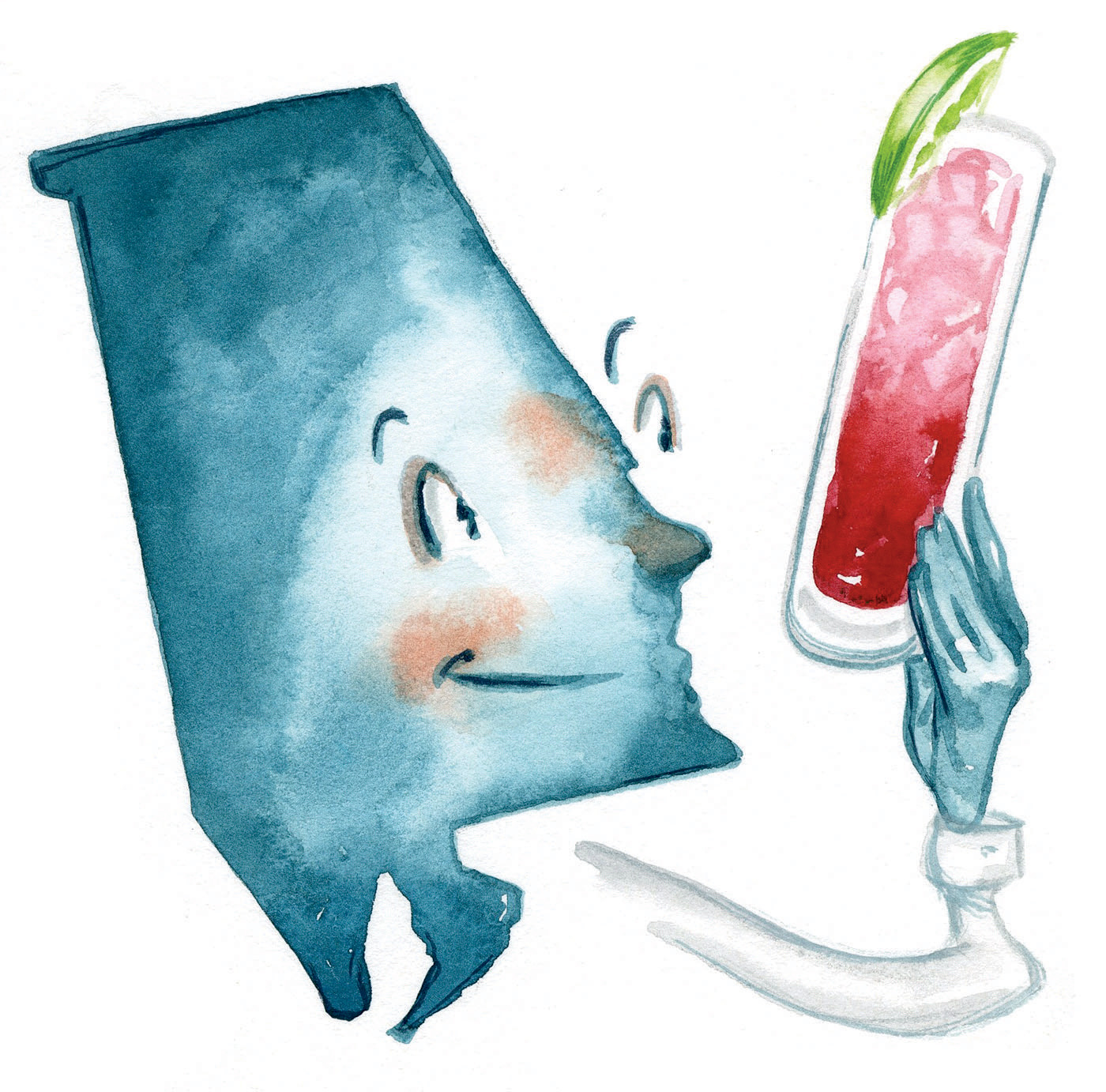
Tim Bower
Alabama
Run for the Roses
If Walter Bellingrath was a better than average businessman—he was one of the Southeast’s first Coca-Cola bottlers—he was an even more talented gardener. Under his vision, the expansive rose garden at his home in Theodore was laid out in the 1930s. Today, eighty-five years after Bellingrath Gardens and Home opened to the public on April 7, 1932, the rose plot abounds with more than seventy-five varieties of two thousand plants, and is still among the best places in the South to see the perennials. Linda Guy, the Bellingrath’s rosarian for more than thirty years, is a passionate and protective guardian of that legacy. “I’m a perfectionist when it comes to the roses,” she says. “I get upset when they don’t perform like they ought to.” On April 7, the gardens will celebrate eighty-five years with discounted ticket prices, but you’ll want to pony up the full amount for the annual Rose Bloom Out, beginning a few days later (predicted peak: April 15–30). If the flowers perform to Guy’s exacting standards, you’ll see favorites such as Gemini and Oh My!, plus a few surprises, like the Mother of Pearl, a pastel peach–colored bloom that stumped Guy at first—it arrived labeled under the wrong name—but is now the rose she recommends most to home gardeners. bellingrath.org
Arkansas
Spring Fling
The popular May Festival of the Arts in Eureka Springs celebrates its thirtieth anniversary this year, but the Ozarks town’s art history stretches all the way back to the 1930s, when the muralist Harry Louis Freund began painting depictions of life in the Natural State for the WPA. The monthlong festival celebrates both the roots and the renaissance of Arkansas art with tours of some sixty-five galleries, an installation of towering tree sculptures representing the seasons at Basin Spring Park, and a yard art competition along the main drag that brings the funk with colored bottle trees and hand-carved totem poles. New this year: A public art installation will pay homage to the most important creators of all—moms. On Mother’s Day weekend (May 13 and 14), artists and visitors are invited to add personal thank-you notes along with flowers to an Instagram-worthy display of irises, lupines, tulips, and calla lilies suspended from the wrought-iron bridge over North Main Street. “It will seem like it’s raining flowers,” says director Sandy Martin. eurekaspringsfestivalofthearts.com
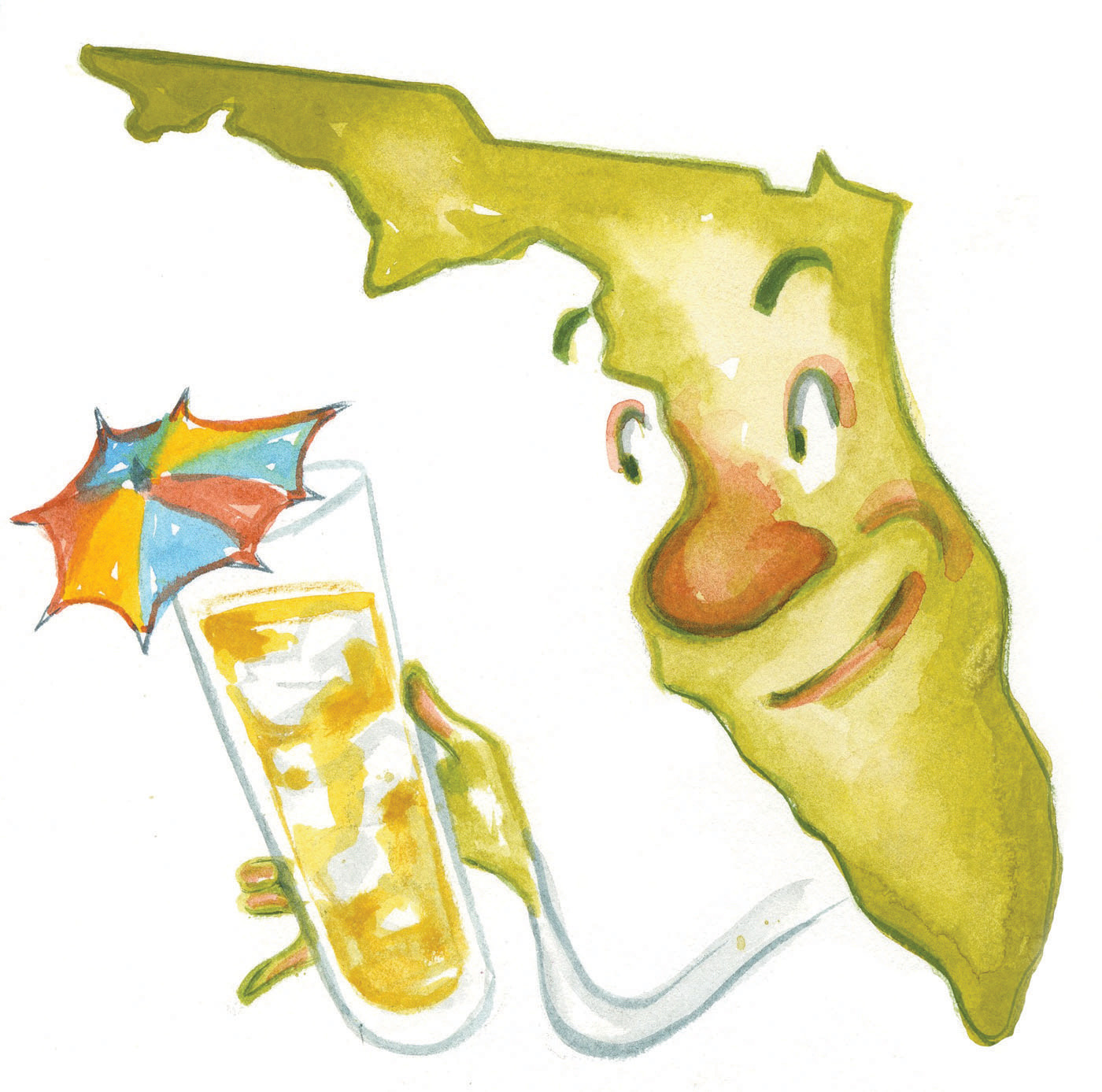
Tim Bower
Florida
Going Wild
If Walt Disney World, beachfront condos, and manicured golf courses are all you know about the Sunshine State, then head to the Florida Museum of Natural History in Gainesville and acquaint yourself with the state’s wilder side. From the wide-open saw-grass prairies in the north to the mythic swamps of the Everglades to the coral reefs ablaze in color along the Keys, Florida contains a jaw-dropping set of ecosystems. And for the past century, the museum, which was officially designated by the state in 1917, has been there to study, document, and protect those natural resources. Researchers and curators maintain more than forty million specimens and artifacts from Florida and beyond—including one of the largest and most diverse butterfly and moth collections in the world. The museum will throw a centennial bash on-site with a black-tie gala and dinner on Earth Day (April 22)—naturally. This fall it will dig even deeper into Florida’s ecological past with a special centennial exhibition, Rare, Beautiful, and Fascinating: 100 Years @Florida Museum, that will include fossilized butterflies, calcified samples of extinct native species, and hunks of prehistoric coral. “We will highlight some of the rarest objects and specimens from the museum’s collection,” says the director, Douglas Jones, “and explore how they’ve added to our understanding of Florida.” Prepare for yours
to change, too. flmnh.ufl.edu

Tim Bower
Georgia
Gone Fishing
Because trout are less active in temperatures below fifty degrees, rising water temps in April and May mean that it’s time to break out the waders and head up to the North Georgia mountains. The Dillard House, which opened in Dillard in 1917 as a small inn and restaurant, makes an ideal base camp for weekend anglers. “You’re within an hour’s drive of more than three thousand miles of fishable trout water,” says Steve Perry, past president of the Rabun County chapter of Trout Unlimited. Celebrating its hundredth birthday this year, the Dillard House is now a full-fledged hotel with ninety-two guest rooms, plus more than two dozen cottages and chalets that have hosted luminaries ranging from Waylon Jennings to Jimmy Carter. The Dillard family, who
still run the place, offer horseback riding, hiking, white-water rafting, and zip-lining, too. And as of last year, anglers can cast a line right on family property in a mile of gin-clear private water stocked with rainbows. With a little notice, the kitchen will gladly prepare your day’s catch, but you’ll find it hard to turn down the restaurant’s famous fried chicken, served family-style. Or don’t, and have both. dillardhouse.com
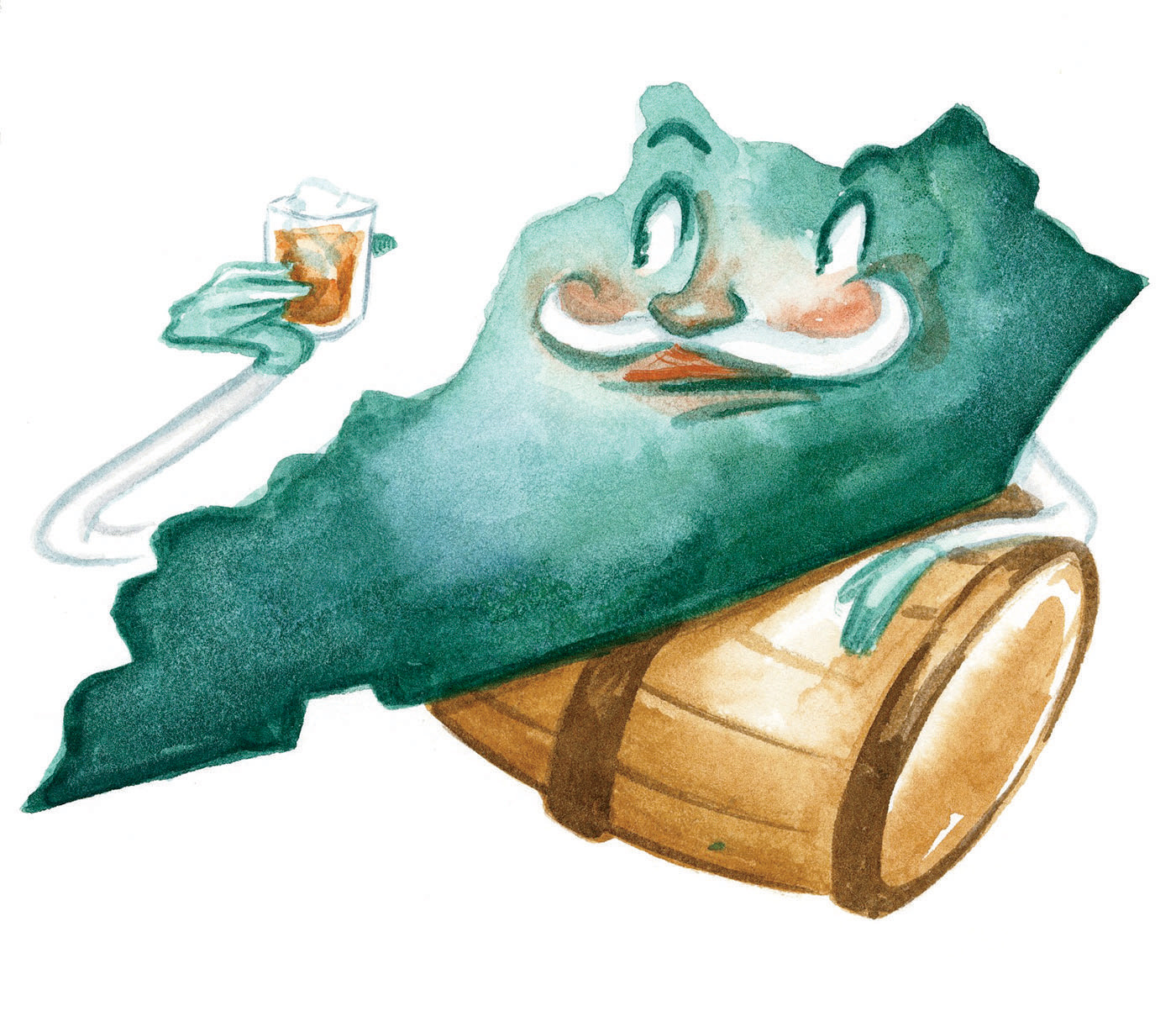
Tim Bower
Kentucky
Paying Tribute
If there’s a better name for a racehorse than Man o’ War, we haven’t heard it yet. With that kind of moniker, the Lexington-born Thoroughbred was all but destined to the greatness he would go on to achieve in just two short years of racing. From his first start on June 6, 1919, Man o’ War captured the hearts of the American people in the early postwar years, rivaling even Babe Ruth in popularity. He won twenty of twenty-one races—including one by an unheard-of hundred lengths—and brought international attention to Kentucky breeders, securing the Bluegrass State’s elite place in the racing world. Today, he is the Thoroughbred by which all others are judged. And this year, Lexington and the Kentucky Horse Park will celebrate the hundredth anniversary of the legendary stallion’s birth. Highlights include a downtown mural; Man o’ War–themed farm tours; and a new exhibit, Man o’ War: The Mostest Horse That Ever Was, so titled for the nickname his longtime groom, Will Harbut, bestowed on him. The exhibition opens March 29 and will showcase never-before-seen artifacts from the horse’s life as a racer. Man o’ War died on Kentucky’s Faraway Farm in 1947 of a heart attack—less than a month after Harbut passed away. They say the unbeatable horse died of a broken heart. kyhorsepark.com

Tim Bower
Louisiana
Fried and True
Whether you are wobbly from the effects of the evening’s libations and craving a beignet at 3:00 a.m., or need a sugar-fueled start to your day at 6:00 a.m., Café Du Monde in New Orleans’ French Quarter is happy to oblige—and has been doing so since 1862. The twenty-four/seven landmark is turning 155 this year. “We’re in the city’s oldest marketplace, so when we opened, farmers were coming by at all hours of the night,” says Café Du Monde president Jay Roman. “There were other coffee stands in the market back then, and each one served some kind of little goody. Our beignets just stuck.” The menu has hardly changed in over a century and a half, so you won’t find much fuss about the anniversary. “We’ll probably just get up and go to work,” Roman says. For the rest of us, indulging in a hunk of fried dough buried in powdered sugar is celebration enough. cafedumonde.com
Maryland
Ain’t It Grand
In the late 1890s, a group of teenage riders were told they weren’t old enough to compete in the beloved Maryland Hunt Cup, which, even today, is considered one of the most challenging steeplechases in the country. Determined to ride, the young Turks started a race of their own, and this year marks its 115th running. The Grand National Steeplechase (April 22) is now one-third of Maryland’s Triple Crown, which includes the Hunt Cup and the My Lady’s Manor. The three-mile course cuts a swath through five private farms in Baltimore County, a piece of Maryland’s most scenic horse country. Follow retired horsemen and other serious steeplechase fans to find a spot near the post-and-rail fences to watch top amateur riders and their mounts hurtle over the timbers. Or pack a picnic spread and join the bulk of the crowd tailgating near the entrance off Butler Road. Forget juleps, though: Instead, locals will be sipping Southsides—a stout rum-and-mint concoction favored by the Maryland hunt country set. grandnationalsteeplechase.com
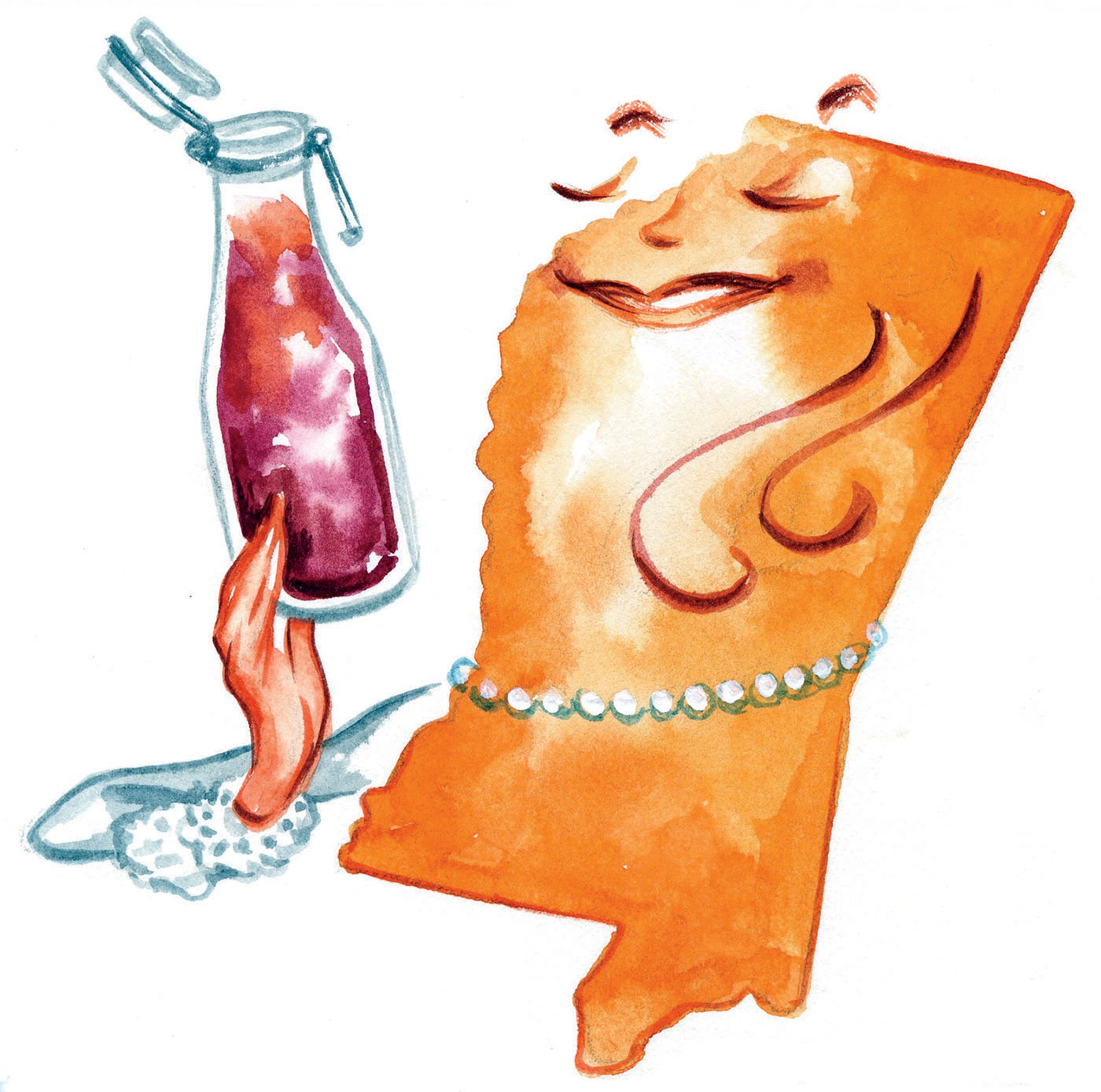
Tim Bower
Mississippi
Twice is Nice
One hundred years ago, Mississippi planned a party. Officials selected a ninety-two-acre parcel of Gulfport property tucked among the live oaks and dubbed it Centennial Plaza for the setting of a celebration in honor of Mississippi’s one-hundredth anniversary of statehood. But with the looming prospect of U.S. participation in World War I, that fete never took place. “The feeling then was it wasn’t a time to celebrate,” Governor Phil Bryant says. A century later, the Magnolia State has another shot. All year long, a slate of exhibitions, musical performances, and festivals around the state will mark Mississippi’s two hundred years. And on April 1, Centennial Plaza will finally fulfill its purpose with the We Are Mississippi bicentennial concert, a salute to native musicians such as Robert Johnson, Jimmie Rodgers, and Elvis Presley. You can dig in between sets: There will be plenty of Gulf Coast eats on hand—shrimp, oysters, and the governor’s favorite, gumbo. “I’m always in search of the perfect gumbo,” he says. “It’s a tough job finding the best, but somebody has to do it.” ms200.org
Oklahoma
Trail Blazers
Who could forget Alan Ladd heading into the wild blue yonder at the end of Shane? Or John Wayne as Rooster Cogburn riding to Mattie’s rescue in True Grit? But what about the real-life Western stories many people don’t know? By the late 1870s, roughly nine thousand of an estimated thirty-five thousand cowboys were African American—former slaves and their descendants who’d gone west after the Civil War. Many found work as cattle drivers along the Chisholm Trail, which ran for more than eight hundred miles from Texas to Kansas. “The trail is a little like a tree: Texas as the roots, Kansas as the top, and Oklahoma as the trunk,” says Stacy Cramer Moore, executive director of the Chisholm Trail Heritage Center in Duncan. From 1867 to 1889, the cowboys drove between six and ten million head of cattle up the path, making it the largest man-made animal migration in history. The Heritage Center will stage a nineteenth-century cowboy camp on April 1 to launch the trail’s yearlong 150th anniversary celebration. Historic markers and museums dot the now-drivable path along U.S. Route 81. The Cherokee Strip Regional Heritage Center in Enid sits on the site of a vital watering hole, and at the Chisholm Trail Museum in Kingfisher, you can explore the homesteads at a pioneer village that still stand in tribute to those trail runners who stayed to build new lives. chisholmtrail150.org
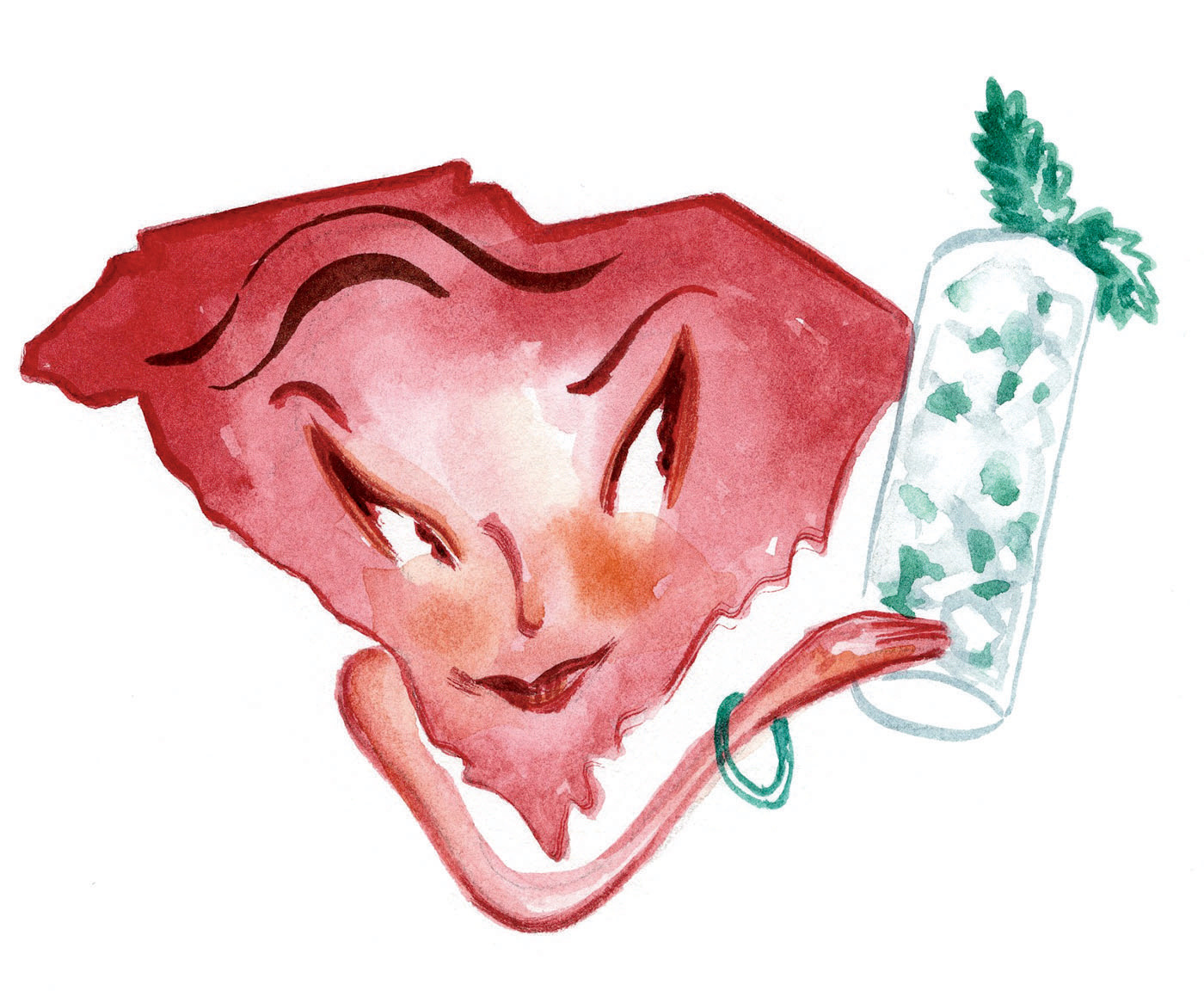
Tim Bower
South Carolina
Fine Swine
When Roosevelt and Ella Scott opened a variety store on the outskirts of rural Hemingway in 1972, they couldn’t have known they were laying the foundation for a barbecue mecca. “It was basically your little neighborhood general store,” says their son, the internationally acclaimed pit master Rodney Scott, who cooked his first whole hog at age eleven. “We sold canned goods, bread, rice, cereal—the basics.” On Thursdays,
the family dished out traditional whole-hog barbecue on white bread and by the pound. “Around the eighties, maybe, the barbecue overtook everything else we were doing.” Forty-five years after his parents opened the store, Scott has just fired up the pits at a new restaurant: Rodney Scott’s BBQ in Charleston. Building on tradition, he has added his spin on family recipes for macaroni and cheese, fried catfish, and banana pudding to the menu. Don’t worry, though, the home fires are still burning. Roosevelt, Ella, and Rodney’s son Dominic tend the pits at Scott’s BBQ in Hemingway with the same round-the-clock devotion they have for the last four decades and change. rodneyscottsbbq.com
Tennessee
Historical Records
Elvis, Howlin’ Wolf, and Johnny Cash all owe at least a portion of their fame to a little studio at 706 Union Avenue in Memphis. “We Record Anything, Anywhere, Any-
time” was a motto and a mission statement for producer Sam Phillips, who founded his famed Sun Records label there sixty-five years ago. The Southern bluesmen and balladeers who flocked to his door from public housing projects and cotton fields would change music forever. And Phillips would help them. In 1960, the producer moved to a bigger building—but by the end of the sixties, he’d abandoned recording for other business pursuits. The old Union Avenue studio languished semiabandoned for decades, also serving as a scuba store and a barbershop. “The reason it’s so preserved today is that it was pretty vacant all those years,” says Nina Jones, manager at the restored Sun Studio. “We have the same floor tiles they recorded on in ’52.” Today, you can stop by the shrine to blues and rock and roll for a nearly hour-long tour. But you’ll have to clear out by dinnertime. Since Cash, Carl Perkins, Roy Orbison, and Jerry Lee Lewis resurrected the studio in 1985 with their Class of ’55 album, Sun has returned to its roots, serving as a nighttime work space for such musicians as U2 and Justin Townes Earle. sunstudio.com

Tim Bower
Texas
Honky Tonk Heaven
Of course, the boot-scuffed concrete floors, cinder-block walls, and corrugated ceilings of John T. Floore’s Country Store can’t actually talk, but they sure do tell some stories. “The rafters have all kinds of things hanging from them—cowboy hats and farm tools,” says managing partner Mark McKinney of the renowned café turned honky-tonk on the outskirts on San Antonio. “There is a legend that John Wayne hung his boots up here and never marked which pair so they wouldn’t get stolen.” The Redheaded Stranger’s career launched here. Several hand-painted signs circa the 1960s still announce WILLIE NELSON EVERY SAT. NITE. Another proclaims, WORLD’S BEST HOMEMADE TAMALES. Order one of them with an ice-cold Shiner Bock before making your mark on the dance floor to celebrate the landmark’s seventy-fifth anniversary. The party kicks off with a two-night set from Robert Earl Keen and the Randy Rogers Band (April 14 and 15). The rest of the 2017 lineup is filled with audience-favorite country, blues, and Americana acts. “Bands come here and tell me they’ve played venues
all over the country and there’s no place like Floore’s,” McKinney says. “I don’t have an easy answer for what the magicis.” But even if he did, a magician never reveals his secrets. liveatfloores.com
Virginia
Lady Be Good
Although the late Ella Fitzgerald left for New York City as a young girl, her legacy lingers in Newport News. “Ella came from the neighborhood our center is in,” says Joanne Palmeira, of the Downing-Gross Cultural Arts Center. “Her story is proof that, regardless of where you come from, you can achieve your dreams when you set your mind to it.” On Ella Fitzgerald Way, in the Ella Fitzgerald Theater, the arts center will celebrate what would have been the famed jazz chanteuse’s hundredth birthday with performances from whiskey-voiced jazz and gospel singer (and G&G cover model) Lizz Wright and Rhonda Ross, daughter of Diana, during the Ella Fitzgerald Music Festival (April 19–22). Come early to visit In Ella’s Lifetime: 100 Artists for Ella,
an exhibit of paintings, sketches, and photographs inspired by the woman of whom Bing Crosby once said, “Man, woman, and child, Ella is the greatest of them all,” on display until April 30. A hundred years after her birth, the Queen of Jazz still reigns. downinggross.org
Washington, D.C.
Let Freedom Ring
On April 16, 1862—almost nine months before the Emancipation Proclamation was issued—Abraham Lincoln signed the District of Columbia Compensated Emancipation Act, freeing more than three thousand people in our nation’s capital that day. One hundred fifty-five years later, his groundbreaking piece of legislation is still cause for celebration. Because April 16 falls on a Sunday this year, city offices will observe Emancipation Day on Monday, April 17, but the celebration officially begins even earlier. After an afternoon parade of city officials, marching bands, and reenactors in period costume down Pennsylvania Avenue (April 8), the District will host a free concert in Freedom Plaza, featuring such artists as Talib Kweli. But there’s a serious element to the festivities, too. Throughout the month, lectures, panels, and other events across town will address the history of slavery. A visit to the Smithsonian’s recently opened National Museum of African American History and Culture is a fitting tribute to the enduring significance of Lincoln’s act, too. emancipation.dc.gov

Tim Bower
West Virginia
Playing Through
When the late golf great Arnold Palmer played the mountain course he designed at Stonewall Resort in Roanoke on its opening day in May 2002, he sank a twenty-five-foot putt to birdie the last hole. Even at seventy-two, he was still “the King.” Randy Hernly, Palmer’s caddy that round, is now the resort’s director of golf. (And he still has that golf ball in his office.) Fifteen years later, he’ll oversee the course’s yearlong celebration of the late golfer, beginning with the April 1 opener and continuing with a scramble tournament during Memorial Day weekend (May 29). After hitting the links, stop by Stonewall’s clubhouse for the requisite Arnold Palmer. But order the famous lemonade–iced tea potable the way Arnie preferred—with a splash of Ketel One vodka. stonewallresort.com








